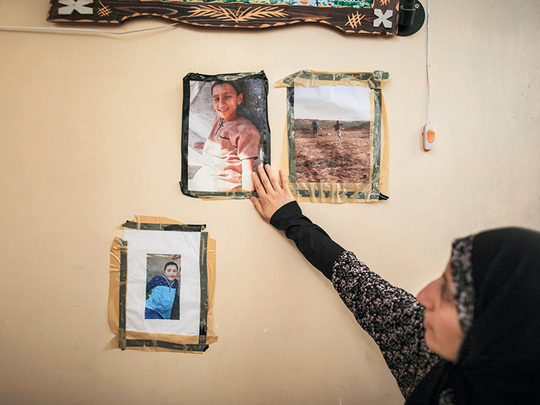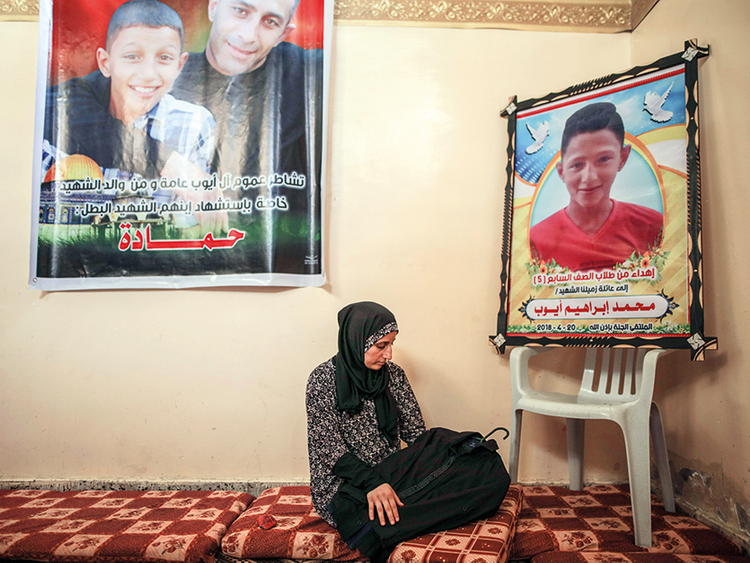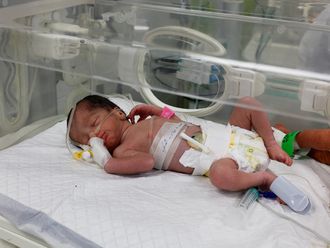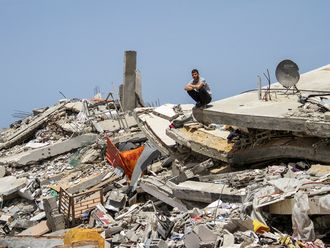
Gaza: Fathi Harb wanted to commit suicide. So he went to a protest this spring along Gaza’s border, hoping Israeli snipers would shoot him, his grandfather recalled.
When they didn’t, the 22-year-old tried again, returning to another protest soon after. Again he survived.
Then, last month, he set himself on fire on a busy street in Gaza City, later succumbing to his wounds.
“He called his father right before he did it and told him of his plans,” his grandfather, Saeed, said.
A mental health crisis is gripping the Gaza Strip, experts say, born of repeated wars and the stress of meeting daily needs in this besieged and impoverished Palestinian enclave.
Mental health experts say they have seen a significant increase in symptoms of psychological distress in recent years.
In 2017, the number of psychiatric patients visiting government-affiliated mental health clinics rose by 69 per cent compared to previous years, according to Gaza’s Al Mezan Center for Human Rights.
The Gaza Community Mental Health Programme (GCMHP) says it has tracked an increase over the past year in anxiety, depression and suicide.
And in a recent report, the World Health Organisation said that the constraints imposed on the lives of Palestinians, including in Gaza, have had a “huge effect” on the mental health of the population, amounting to “much more than simple psychological disturbances.”
Nearly 2 million Palestinians are trapped in the Gaza Strip, hemmed in by restrictions on travel and commerce imposed by Israel, Egypt and the Palestinian Authority to pressure the militant Hamas group, which rules the territory.
The closure has crippled Gaza’s economy and sent unemployment soaring.
Gaza’s residents get only a few hours of electricity each day, and most drinking water is contaminated.
The specter of a new conflict with Israel hangs over the territory.
Harb had been chronically jobless.
He shared a single apartment with 12 family members, including his pregnant wife.
It was too hard, he told his father, explaining his wish to die.
“He said, ‘It will be better than this terrible life we are living'," Saeed recalled.
In Gaza, “we are talking about a situation where the majority of people have feelings of hopelessness, helplessness and powerlessness”, said Hasan Ziyada, director of the GCMHP.
“They feel trapped. They feel paralysed and like they cannot do anything to change their reality.” The result, he said, is high levels of stress and psychological trauma.
Gaza has long been synonymous with violence and insecurity.
But the worst period of conflict has been the past decade, when more than 4,000 Palestinians were killed in three Israeli assaults on Gaza, according to the Israeli human rights organisation, B’Tselem.
In the immediate aftermath of the 2014 war, WHO estimated up to 20 per cent of the population may have developed mental health conditions. According to UNICEF, more than 300,000 children in Gaza required some sort of psychosocial care.
By the time Israeli forces killed 14-year-old Mohammad Ayyoub at a protest in Gaza this April, the sprightly but troubled youth had lived through three wars.
They had left him deeply traumatised.
He was treated for anxiety and a violent temper, his parents said.
The boy’s family gathered recently at their sparsely furnished home in Gaza’s Jabaliya refugee camp to pore over his school notebooks, where he liked to scribble hearts during class, and to watch videos of him dancing the Palestinian folk dance known as dabke.
His parents recounted his decline.
After the 2014 war, Ayyoub became nervous, clingy and afraid of the dark.
He lashed out at his brothers and sisters, hitting them at home.
In trauma counseling at his United Nation (UN)-run school, Ayyoub learned stress management exercises including controlled breathing, and the treatment appeared to work. But he relapsed, becoming more serious, angry and withdrawn.
“He stopped smiling. He stopped playing with other kids,” said his mother, 39-year-old Raeda, wearing a floral headscarf and surrounded by her five other children.
“His father was telling him, ‘You have to calm down.’"
Upset over the US decision to move its embassy to Occupied Jerusalem, which Israelis and Palestinians both claim as their capital, Mohammad Ayyoub told his mother he would be willing to give his life for the city.
On April 20, he slipped away to a demonstration on the Israel-Gaza border, where an Israeli sniper shot him through the head.
More than 130 Palestinians have been killed at weekly protests like the one Ayyoub attended.
The Norwegian Refugee Council (NRC), which assists Palestinian refugees, also treated Ayyoub at its counseling programme in local schools. The group says it mapped a “psychological deterioration” among schoolchildren in Gaza during the months before and after the border protests started. It also traced an increase in the per centage of students suffering nightmares.
School principals reported seeing more violent incidents on school grounds.
“These children are already living in an unbelievable situation, and the difficulties they face keep getting worse,” said Assad Ashour, NRC’s education coordinator in Gaza.
“Everything that is happening in Gaza, all the suffering, it will eventually be reflected on the children.”
The crisis has been exacerbated by poor government funding for mental health in Gaza, where the health sector as a whole is woefully underequipped, as well as by the stigma that Palestinian society attaches to psychological problems.
The Palestinian Ministry of Health has developed a national mental health strategy, but only a small portion of the ministry’s total budget is devoted to mental health.
Because of the economic blockade, Gaza’s hospitals often face shortages of key supplies and medicines, including some psychotropic drugs, health workers say.
Since Gaza’s only psychiatric hospital favours strict drug therapy over counseling or psychosocial support, much of that work is left to community centers and donor-funded programmes.
On a recent morning at the GCMHP’s headquarters in Gaza City, social worker Nedal Al Shamaly was staffing the hotline offering free consultations.
The callers included a father worried about his sleepwalking daughter; a widow who developed anxiety after her husband was killed in the 2014 war; and a woman who wanted a divorce because her husband sexually abused her.
“Before the siege, we had economic problems. We had social problems. But it’s not like it is now,” said Shamaly, who has worked at the centre for 15 years.
“There was some hope before. People could travel. They could manage their lives,” he said. “But now, young people want to either escape Gaza or are thinking about suicide. There is a complete loss of hope.”













